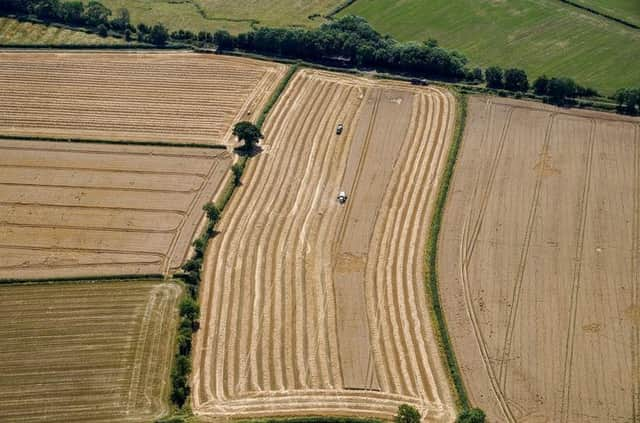UK heatwave: Drought declared for parts of England after extreme weather dries up rivers and shrivels crops across Europe


The conditions, which have almost completely deprived some areas of rainfall all summer, have prompted the National Drought Group to move parts of the South West, parts of southern and central England, and the East of England into official drought status.
The change could lead to more measures such as hosepipe bans, however, the Environment Agency has reassured the public that essential water supplies are safe.
Advertisement
Hide AdAdvertisement
Hide AdThe NDG is made up of representatives from the Department for Environment Food and Rural Affairs (Defra), water companies, the Environment Agency (EA), the National Farmers’ Union (NFU), Natural England, Consumer Council for Water, water services regulator Ofwat, Water UK and the Drinking Water Inspectorate, as well as the Angling Trust and the Rivers Trust.
Europe is not alone in the crisis, with drought conditions also reported in East Africa, the western United States and northern Mexico.
At a meeting earlier this summer, it moved most of England into “prolonged dry weather” status, the first of four stages used to describe its response.
Eight of 14 areas designated by the EA have now moved to “drought”, the second stage, including Devon and Cornwall, Solent and South Downs, Kent and South London, Herts and North London, East Anglia, Thames, Lincolnshire and Northamptonshire, and East Midlands.
Water minister Steve Double said action was already being taken by the Government, the EA and others to manage the impacts.
“All water companies have reassured us that essential supplies are still safe, and we have made it clear it is their duty to maintain those supplies”, he said.
“We are better prepared than ever before for periods of dry weather, but we will continue to closely monitor the situation, including impacts on farmers and the environment, and take further action as needed.”
The most recent EA data showed rainfall totals for August have ranged from 12% of the long-term average in north east England to 0% in south east and south west England.
Advertisement
Hide AdAdvertisement
Hide AdMeanwhile, river flow data revealed almost 90% of measuring sites were showing below normal readings, with 29% classed as “exceptionally low”.
It comes after the driest July on record for some areas and the driest first half of the year since 1976.
The total stock of water in England’s reservoirs at the end of July was 65% of its normal capacity – the lowest level for that point in the calendar year since 1995, the EA said.
More than two-thirds of reservoirs or groups of reservoirs in England saw their stock of water drop by more than 10% between the end of June and the end of July.
Four water companies – Welsh Water, Southern Water, Thames Water, and South East Water – have all imposed hosepipe bans, while Yorkshire Water has announced a ban will start on August 26.
The heat and dry conditions have also taken their toll on agriculture.
According to the NFU, crops such as sugar beet and maize are showing signs of stress from a lack of rain, while crops relying on irrigation, such as field vegetables and potatoes, are also facing problems.
NFU deputy president Tom Bradshaw said the situation was “hugely challenging” for farmers who were facing running out of irrigation water and having to use winter feed for animals because of a lack of grass.
Advertisement
Hide AdAdvertisement
Hide AdThe NFU also said “tinder dry” standing crops and parched grass posed a huge risk of fires spreading.
The unprecedented drought is also afflicting nearly half of the European continent and is damaging farm economies, forcing water restrictions and threatening aquatic species.
There has been no significant rainfall for almost two months in Western, Central and Southern Europe.
And the dry period is expected to continue in what experts say could be the worst drought in 500 years.
